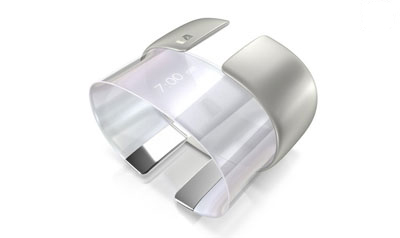HP unveils its vision of the future

HP believes that future high-tech devices will need to offer less functionality, so that the users of tomorrow aren't swamped in complexity.
In a blue-sky presentation at the HP Mobility Summit in San Francisco last week, Phil McKinney, chief technology officer for HP Personal Systems Group, presented the company's vision for a future where wrist watches connect to nearly any wireless network and an e-wallet is your new flexible friend.
"Our focus is not to integrate features and functions into devices, but to disintegrate them into a device or capability that serves a single purpose," said McKinney.
HP has envisioned a watch that "contains all the RF [radio frequency] technologies you need to access the Internet — a Personal Access Gateway," said McKinney.

HP's next-generation watch would keep you connected on the move
The thin client watch [pictured above] would interact with bendable display panels [centre right below] to give users access to personal diary, chat, the Internet and Web services. The flexible display panels could be curled for storage [bottom centre below].
HP claims these concept devices would change the way people live and work
The watch would interact with an earpiece [centre left above] that could allow it to function as an IP phone. It could also interact with a e-pen to record user movements and translate them into recorded text, which could then be transmitted wirelessly over the Web.
An "E-Wallet" [bottom right above] with bendable screen technology would communicate with the watch, enabling users to interact with information, perform e-banking, and interact with e-commerce sites.
HP has working prototypes of "smart-tables" [bottom left above]. A user would drop a display panel into a receptacle, and the display would be enlarged on the table. Information could then be accessed via the touch-sensitive surface of the table. A "smart-shelf" would be used to recharge a battery in the watch.
"I want it to be insanely simple to use technology in your everyday life," said McKinney.
McKinney admitted that his vision was an extreme view of disaggregation, and said that legacy technologies would also need to be supported.
McKinney also said that some devices would need a level of aggregation, and wouldn't just perform one task.
"The point is not to put in functionality that people won't use," said McKinney.